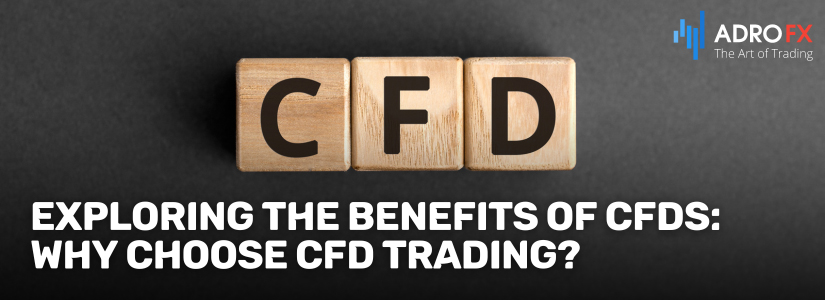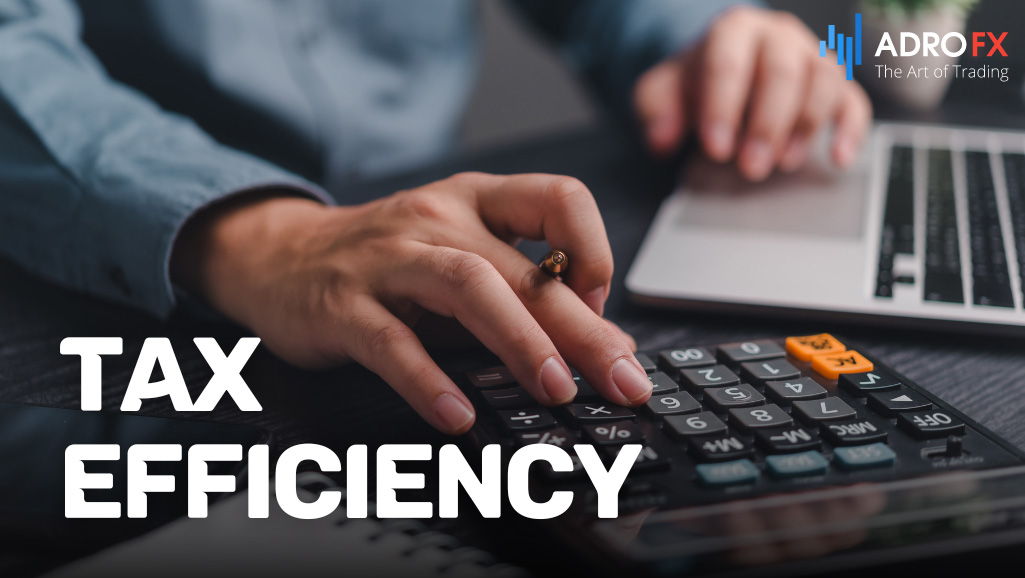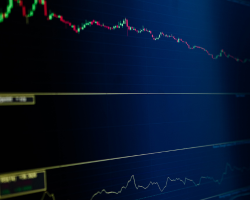Exploring the Benefits of CFDs: Why Choose CFD Trading?

Contracts for Difference (CFDs) have emerged as popular financial instruments in recent years, offering traders unique opportunities to participate in various markets. In this article, we delve into the world of CFD trading, exploring its numerous benefits and advantages. Whether you're a seasoned investor or new to the financial markets, understanding the potential of CFDs can enhance your trading strategies and portfolio management.
What Are CFDs?
Contracts for Difference (CFDs) represent financial tools enabling traders to speculate on underlying asset price fluctuations without possessing the assets themselves. Essentially, a CFD constitutes a pact between the trader and the broker, wherein the trader commits to exchanging the discrepancy in asset price from the contract's initiation to its closure.
CFDs operate as derivative instruments, deriving their value from various underlying assets, including stocks, indices, commodities, currencies, and cryptocurrencies. Unlike conventional investing methods where investors acquire the actual asset, CFD trading empowers traders to capitalize on price movements without owning the underlying asset.
In CFD trading, traders have the flexibility to take both long (buy) and short (sell) positions, allowing them to profit from both upward and downward market trends. Furthermore, CFDs offer leverage, enabling traders to magnify their positions with a modest initial investment. However, it's crucial to acknowledge that while leverage can amplify profits, it also escalates the potential for losses, underscoring the importance of effective risk management in CFD trading.
In summary, CFDs afford traders flexibility, accessibility, and the opportunity to diversify their portfolios across various asset classes. In subsequent sections, we will delve deeper into the specific advantages of CFD trading, encompassing aspects such as hedging, risk management, tax efficiency, and liquidity. Whether traders aim to capitalize on short-term market fluctuations or hedge against portfolio risks, CFDs offer a versatile and dynamic approach to engaging with financial markets.
Accessibility and Leverage
CFD trading offers unparalleled accessibility to financial markets compared to traditional trading methods. Unlike conventional investing, which often requires substantial capital and specific account requirements, CFD trading allows individuals to enter the markets with relatively modest sums. Many brokers offer low minimum deposit requirements, making CFD trading accessible to a broader range of investors, including retail traders.
One of the key advantages of CFD trading is the use of leverage. Leverage enables traders to control larger positions with a fraction of the capital required for traditional investing. By borrowing funds from their broker, traders can amplify their positions and potentially magnify their profits. For example, with a leverage ratio of 1:10, a trader can control a position worth $10,000 with just $1,000 of their own capital. While leverage can enhance returns, it's essential to exercise caution, as it also increases the risk of losses. Proper risk management is crucial when trading with leverage to avoid significant drawdowns.

Diverse Asset Classes
CFD trading boasts a remarkable feature: the extensive selection of asset classes available for trading. Traders have access to a broad spectrum of markets, encompassing stocks, indices, commodities, currencies, and cryptocurrencies, all accessible through a single trading platform. This breadth of options presents traders with abundant opportunities to diversify their portfolios and leverage various market movements.
Stock CFDs allow traders to engage in speculation on individual stock price fluctuations without possessing the underlying shares. This versatility permits traders to capitalize on both upward and downward stock price trends, thereby unlocking opportunities in both bullish and bearish market environments. Similarly, index CFDs mirror the performance of major stock indices like the S&P 500, FTSE 100, and DAX, facilitating exposure to broader market dynamics.
Commodity CFDs offer traders the chance to trade popular commodities such as gold, oil, and natural gas, granting access to the commodities market without the complexities associated with physical ownership. Currency CFDs, also referred to as forex trading, provide avenues to trade currency pairs, spanning major, minor, and exotic pairs, affording traders the potential to profit from fluctuations in exchange rates.
Lastly, cryptocurrency CFDs enable traders to speculate on the price movements of digital currencies like Bitcoin, Ethereum, and Ripple, allowing participation in the rapidly evolving cryptocurrency market. This diverse array of asset classes empowers traders to construct well-rounded portfolios and adeptly navigate shifting market conditions.
Ability to Profit in Both Rising and Falling Markets
CFDs offer traders the unique ability to profit from both upward and downward price movements in the underlying assets. This flexibility is one of the key advantages of CFD trading, as it allows traders to capitalize on market trends regardless of whether prices are rising or falling.
When traders believe that the price of an asset will increase, they can take a long position by buying the CFD. If the price indeed rises as anticipated, the trader can sell the CFD at a higher price than they paid, thereby realizing a profit. For example, if a trader buys 100 shares of a stock CFD at $50 and the price rises to $60, they can sell the CFD for a $10 per share profit.
Conversely, when traders expect the price of an asset to decrease, they can take a short position by selling the CFD first and buying it back later at a lower price. If the price falls as predicted, the trader can buy back the CFD at a lower price than they sold it for, again profiting from the price movement. For instance, if a trader sells 100 shares of a stock CFD at $50 and the price drops to $40, they can buy back the CFD for a $10 per share profit.

Hedging and Risk Management
CFDs play a crucial role as effective hedging tools to mitigate risks within traditional investment portfolios. Through offsetting positions in CFDs, traders can shield their existing investments from adverse market movements. For instance, if a trader maintains a portfolio of stocks anticipated to decrease in value, they can initiate short CFD positions on those stocks to hedge against potential losses.
In CFD trading, meticulous risk management is essential, prompting traders to adopt diverse strategies to curtail exposure to market volatility. Stop-loss orders represent a prevalent technique, automatically closing out positions at predetermined price levels to contain potential losses. Moreover, position sizing proves instrumental, involving the calculation of the appropriate capital allocation for each trade, contingent on risk tolerance and account size, thereby aiding traders in managing their overall risk exposure.
No Ownership of Underlying Assets
CFD trading stands out due to its distinctive characteristic of not entailing ownership of the underlying assets. Instead, CFDs serve as derivative financial instruments empowering traders to speculate on price movements without possessing the underlying securities, commodities, or currencies.
This facet of CFD trading presents several advantages. Primarily, traders gain access to a broad spectrum of markets and assets devoid of the intricacies and expenses linked to physical ownership. Unlike traditional investing, which may entail storage fees, maintenance costs, and dividend payments, CFD trading bypasses these additional financial burdens.
Moreover, the absence of ownership facilitates seamless entry and exit from positions, unrestricted by the constraints of asset ownership. This flexibility fosters swift decision-making and smooth execution of trading strategies, empowering traders to exploit market opportunities with enhanced efficiency.
Flexibility and Liquidity
CFD trading provides traders with unparalleled flexibility in terms of position sizes, trading hours, and access to global markets. Unlike traditional investing, which often imposes restrictions on the minimum position size, CFD trading allows traders to open positions of any size, enabling them to tailor their trades to their specific risk tolerance and investment objectives. This flexibility is particularly advantageous for traders with smaller account sizes or those looking to implement more precise trading strategies.
Moreover, CFD markets operate 24 hours a day, five days a week, allowing traders to access global markets and capitalize on price movements around the clock. These extended trading hours offer increased opportunities for profit, as traders can react to news events and economic developments in real-time, regardless of their geographical location.
Additionally, CFD markets are highly liquid, meaning that there is a high volume of trading activity and a large number of buyers and sellers at any given time. This liquidity ensures that traders can enter and exit positions quickly and easily, with minimal slippage. As a result, traders can execute their trades at the desired price levels, without experiencing significant price discrepancies between the quoted price and the execution price.

Tax Efficiency
CFD trading may offer tax advantages compared to traditional investing, depending on the jurisdiction in which the trader resides. In many countries, profits from CFD trading are subject to capital gains tax, which is typically lower than income tax rates. Additionally, CFD traders may be able to offset trading losses against other capital gains, reducing their overall tax liability.
However, it is essential for traders to be aware of the tax implications of CFD trading in their specific jurisdiction and to consult with a tax professional for personalized advice. Tax laws and regulations vary from country to country, and the treatment of CFD trading profits and losses may differ accordingly.
In general, CFD traders should keep detailed records of their trading activity, including profits, losses, and expenses, to accurately report their income for tax purposes. By staying informed about tax regulations and diligently documenting their trading activity, traders can maximize their tax efficiency and minimize their tax liability.
Conclusion
In conclusion, CFD trading presents a plethora of advantages that appeal to both novice and seasoned traders. Throughout this discourse, we've delved into the principal benefits of CFD trading, which encompass:
- Accessibility and Leverage
CFDs afford traders easier access to financial markets and the ability to leverage their positions, potentially amplifying returns on investment. - Diverse Asset Classes
CFDs grant access to a broad array of asset classes, enabling portfolio diversification and the seizing of opportunities across stocks, indices, commodities, currencies, and cryptocurrencies. - Ability to Profit in Both Rising and Falling Markets
By facilitating long (buy) and short (sell) positions, CFDs empower traders to profit from both upward and downward price movements, irrespective of market conditions. - Hedging and Risk Management
CFDs serve as effective hedging tools for mitigating risks in traditional investment portfolios, with risk management tactics like stop-loss orders and position sizing aiding traders in effectively managing exposure. - Flexibility and Liquidity
CFD trading offers flexibility in terms of position sizes, trading hours, and market access, coupled with high liquidity, facilitating swift entry and exit from positions. - Tax Efficiency
Depending on the jurisdiction, CFD trading may confer tax advantages compared to conventional investing, with profits subject to capital gains tax and the potential to offset trading losses against other capital gains.
As you contemplate your investment strategy, it's imperative to conduct thorough research into CFD trading and its alignment with your financial objectives and risk tolerance. Whether you're a seasoned trader or embarking on your investment journey, exploring CFD trading platforms and seeking guidance from financial professionals can furnish valuable insights tailored to your requirements.
Embark on the next phase of your investment odyssey by exploring CFD trading opportunities and discerning how it can complement your overarching investment strategy. With prudent deliberation and informed decision-making, CFD trading holds the potential to serve as a valuable addition to your investment portfolio.
About AdroFx
Established in 2018, AdroFx is known for its high technology and its ability to deliver high-quality brokerage services in more than 200 countries around the world. AdroFx makes every effort to keep its customers satisfied and to meet all the trading needs of any trader. With the five types of trading accounts, we have all it takes to fit any traders` needs and styles. The company provides access to 115+ trading instruments, including currencies, metals, stocks, and cryptocurrencies, which make it possible to make the most out of trading on the financial markets. Considering all the above, AdroFx is the perfect variant for anyone who doesn't settle for less than the best.









